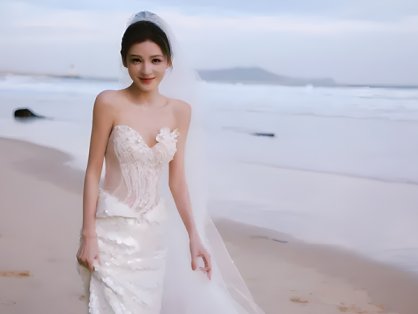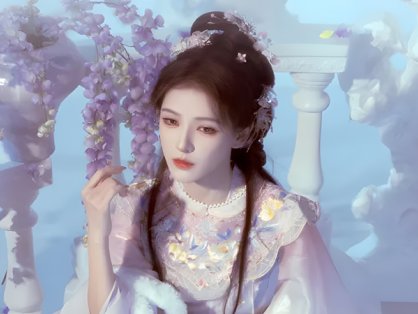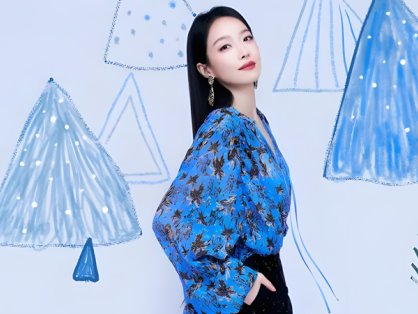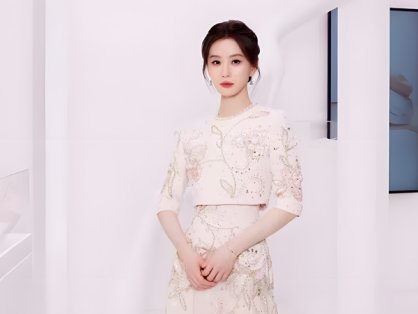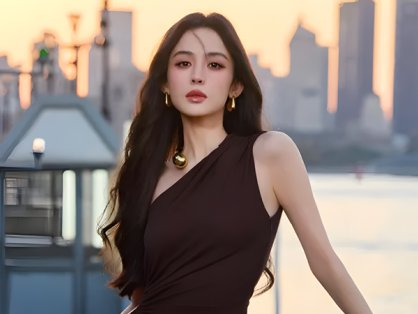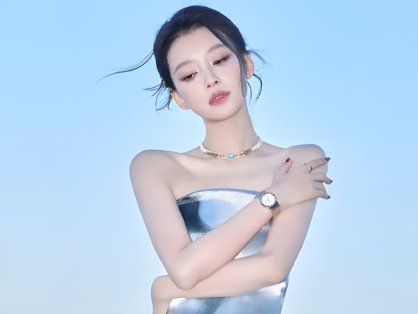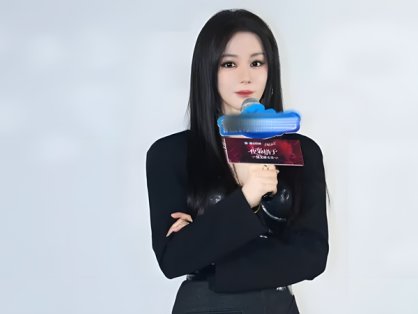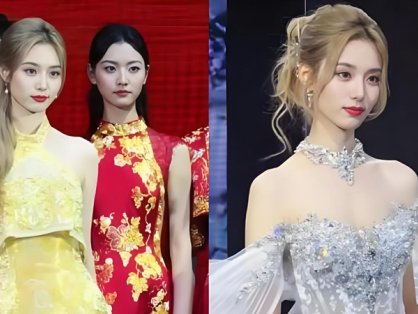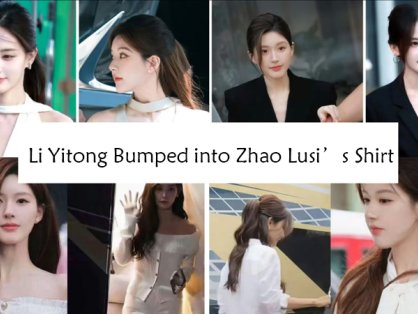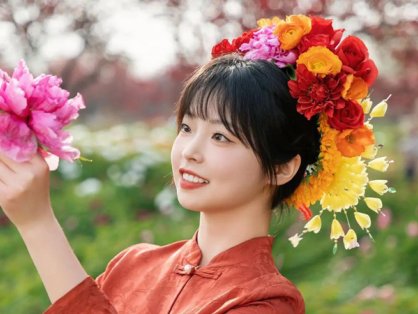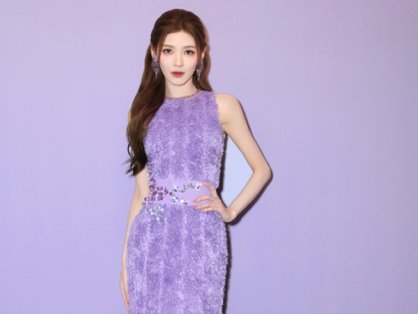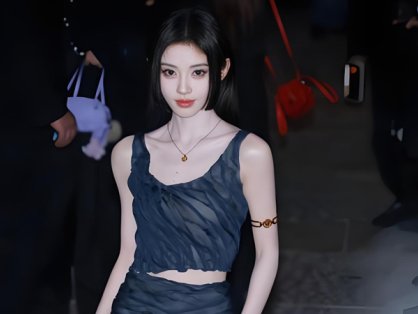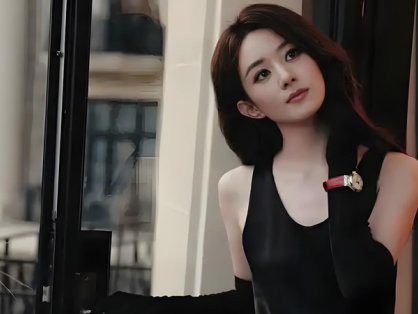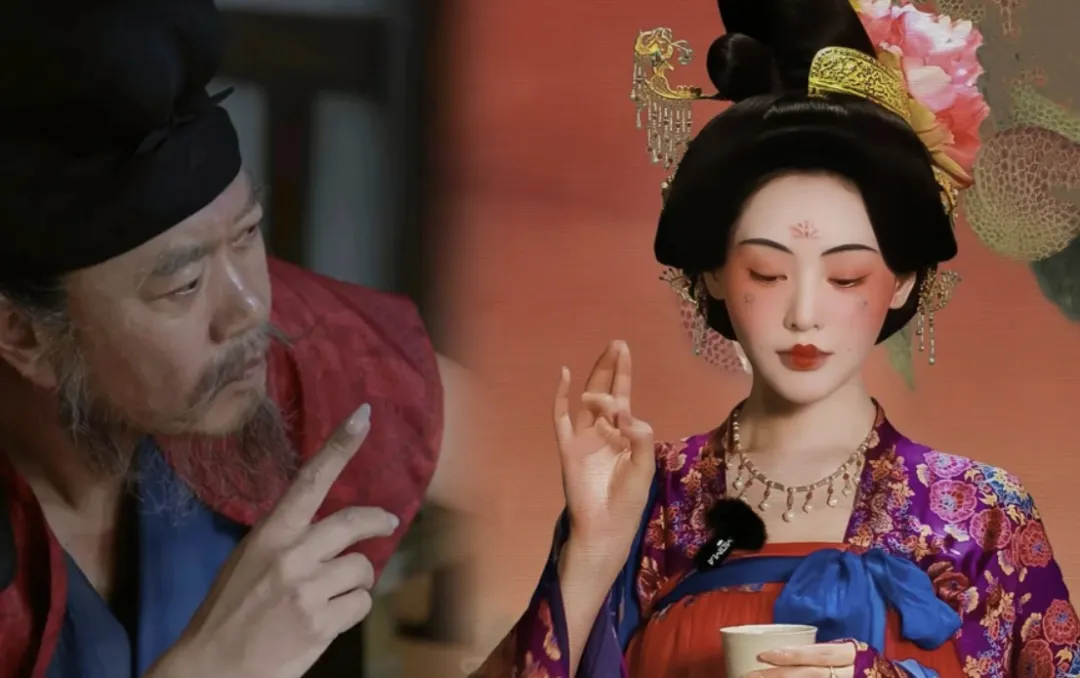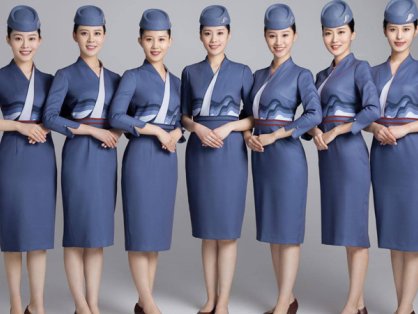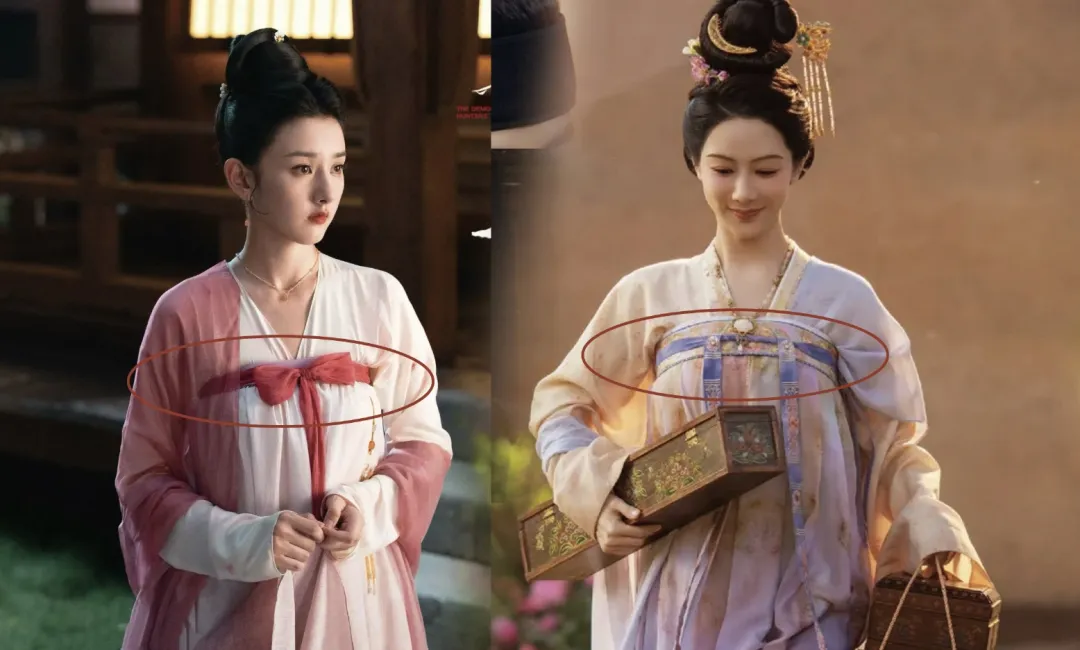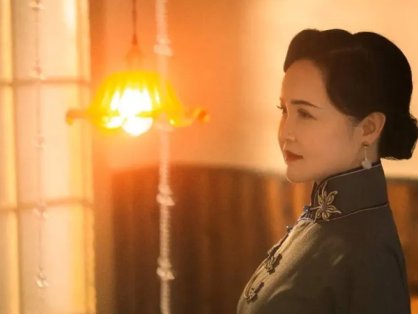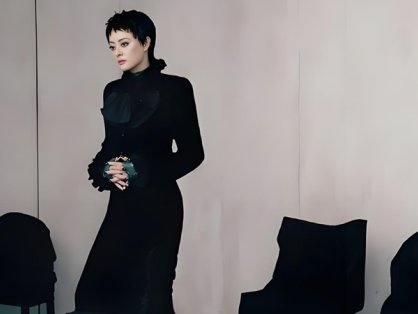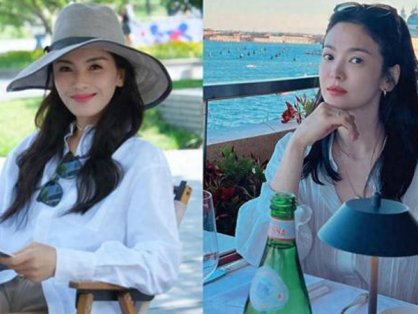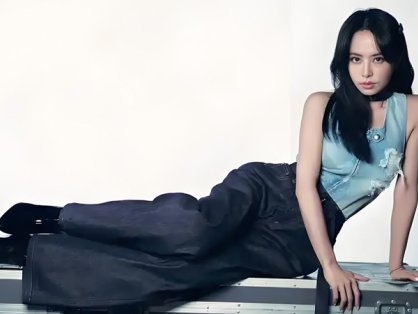-
Zhang Yuxi’s Ocean-Inspired Gown Reshapes Bridal Fashion
A recent photoshoot featuring actress Zhang Yuxi (张予曦) has captivated social media, not for a new drama role, but for a breathtaking interpretation of bridal wear. Set against the backdrop of a windswept beach, the images present her not merely as a bride, but as a mythical figure emerging from the sea itself. The series transcends conventional wedding photography, framing a narrative where fashion, nature, and personal expression converge into a single, powerful visual statement. This isn't just a dress photographed near the ocean; it is a gown conceptually born from it, challenging traditional notions of bridal sanctity with a wave of liquid romance and effortless grace. The Gown as Art At the heart of this spectacle is the dress itself, a masterclass in thematic design. The sweetheart neckline bodice, embroidered with pearls and delicate feather-like motifs, catches the light with a subtle, shimmering effect. This careful embellishment creates the illusion of sunlight dancing on water, a direct translation of the ocean's sparkle into wearable art. The fabric appears alive, its texture and details meticulously crafted to echo the natural environment surrounding her. The silhouette is a defining feature. A fitted mermaid cut flares into a cascading train of layered…- 0
- 0
- 14
-
Zhang Yuxi’s Fusion of East and West Aesthetics
The image stopped countless scrolling fingers mid-motion. There, bathed in the ethereal lavender haze of blooming wisteria, stood actress Zhang Yuxi (张予曦), transformed. At 34, she was not merely wearing a costume but embodying a vision, a seamless blend of person, place, and tradition. Her photoshoot, set against the unexpected backdrop of European-style architecture draped with cascading purple flowers, became an overnight sensation. It was more than a celebrity fashion spread; it was a statement. This moment captured a powerful contemporary dialogue between a modern Chinese woman and an ancient sartorial art form, suggesting that true elegance is not bound by era or age, but is a living, breathing continuum. A Portrait in Violet The genius of the look lies in its meticulous harmony. Zhang Yuxi's Hanfu is a soft symphony in powdered lavender and plum, its delicate embroidery tracing floral patterns that seem to echo the living wisteria around her. The ensemble avoids ostentatious grandeur, opting instead for a refined, almost poetic grace. A pivotal detail is the outer robe, trimmed with a subtle, downy fringe. This touch adds a tangible texture and depth, preventing the flowing silks from appearing flat, and introduces a whisper of delicate luxury. Every…- 0
- 0
- 17
-
What Makes Song Qian's Bold Blue-and-Black Look So Electrifying?
A recent public appearance by singer and actress Song Qian (宋茜) has set fashion forums ablaze. Her outfit, a masterclass in confident color blocking, immediately commands attention. It’s a look that doesn’t just walk into a room—it announces its arrival. By pairing a vibrant, patterned blouse with a sleek, minimalist skirt, she achieves a balance that feels both daring and perfectly controlled. This ensemble transcends a simple style choice; it represents a deliberate fashion statement from an artist known for her sartorial intelligence. Deconstructing the Top The foundation of the look is the sapphire-blue floral blouse. This isn't a shy pastel, but a rich, jewel-toned piece that makes a powerful first impression. The print adds a layer of complexity, preventing the solid color from feeling overwhelming. A deep V-neckline introduces a hint of allure, skillfully balanced by the shirt's overall structure. This detail draws the eye while maintaining an air of sophistication. Further elevating the top are its thoughtful design elements. Gently gathered sleeves create a soft, blousoned effect that contrasts with the sharpness of the short skirt. This subtle volume adds movement and a touch of romance to the silhouette. A delicate drawstring at the neck or waist allows…- 0
- 0
- 11
-
What Makes Liu Shishi’s Pink Tulle Gown a Modern Fairytale?
When Liu Shishi (刘诗诗) recently appeared in a pale pink tulle gown, the internet momentarily stopped scrolling. The image, set against a soft ink-wash background, felt like a living painting—a delicate fusion of classical China elegance and contemporary romance. This was not merely a red-carpet moment; it was a statement. Her look transcended typical celebrity fashion, offering a quiet manifesto on how tradition can converse with modern design. It presented a question many now ask: how can one wear history without being trapped by it? Liu Shishi’s answer, woven into every stitch of that gown, is proving profoundly influential. The Dress Speaks The gown’s power lies in its nuanced details. The shade, reminiscent of early cherry blossoms, softened her silhouette and enhanced her innate poise. Delicate pearl edging at the neckline provided a subtle lift of sophistication, avoiding any hint of ostentation. The true marvel was the intricate embroidery—golden branches and leaves meticulously crafted across the skirt, resembling a fine Gongbi (工笔) painting brought to life on fabric. This element rooted the dress firmly in an artistic heritage while its sheer tulle layers kept it ethereally modern. Strategic design choices amplified a specific grace. The half-sleeves gently suggested rather than…- 0
- 0
- 14
-
Nazha’s Chocolate Gown Against the Twilight Riverside Canvas
What happens when fashion becomes a language of its own, speaking through silhouette, light, and landscape? A recent series of photographs featuring actress Nazha (娜扎) offers a compelling answer. Captured against the backdrop of a dusk riverside, she is dressed in a deep chocolate brown, one-shoulder gown. The images transcend mere celebrity photography, resembling carefully composed painterly frames where human form and environment engage in a silent, elegant dialogue. This is not just a display of attire but a statement on modern elegance, where subtlety and precision create an impact far greater than overt spectacle. A Dusk Canvas The location is as crucial as the attire. The fading golden hour light by the river provides a soft, diffuse glow that naturally enhances the rich, chocolate hue of the gown. This warm, natural spotlight illuminates Nazha's complexion and adds a layer of cinematic depth to the scene. The water's surface, reflecting the twilight sky, creates a serene and expansive canvas, making the figure appear both grounded and ethereal. The choice of this setting demonstrates a sophisticated understanding of how environment frames fashion, transforming a photoshoot into a narrative moment suspended in time. The gown itself is a masterpiece of understated design.…- 0
- 0
- 15
-
How a Silver-Blue Gown by the Sea Reshape a Star's Image
The shoreline is a photographer's favorite canvas, but it is rare for an actress to become one with its nocturnal poetry so completely. In a recent photoshoot, Sun Yi (孙怡) achieved this, wearing a gown that seemed spun from moonlight and sea foam. The images captured more than a beautiful woman in a beautiful dress; they framed a moment of stylistic alchemy. This was not merely a fashion choice, but a deliberate step in a public evolution, where fabric, light, and persona fused to create an iconography far removed from her earlier public identity. The Dress as Character The centerpiece was a metallic silver-blue gown, a garment that acted as both armor and allure. Its cold, sleek satin reflected light like shifting water, changing hue with every subtle movement. The strapless neckline presented a sculptural quality, framing Sun Yi's shoulders and collarbone with elegant severity. This was not a dress meant for frivolity; it carried a narrative weight, reminiscent of a celestial being or a noble figure from a Wuxia epic, dignified and untouchable. Its architecture was masterful. A fitted bodice and high waist accentuated her slender frame, while the skirt flared into a soft A-line silhouette. This classic shape…- 0
- 0
- 11
-
Has Song Yi Become Our Generation's Ethereal Style Muse?
The recent appearance of actress Song Yi (宋轶) has once again set the internet ablaze, not merely for its beauty but for its conceptual depth. Stepping out in a gown that seemed spun from twilight itself, she transformed a red carpet into an enchanted glade. This was not just fashion; it was a narrative of metamorphosis, a visual poem that resonated deeply with an audience yearning for elegance intertwined with a touch of wild, natural mystery. Her journey from a recognizable face to a bona fide style icon speaks to a deliberate and fascinating evolution, making her current "forest spirit" moment a pivotal chapter worth examining. The Gown The dress itself was a masterclass in subtle artistry. A gradient flowed from the palest leaf-green to a deep, mossy yellow-green, mimicking the dappled light of a dense forest. Thousands of minute sequins were scattered across the fabric like dewdrops catching the first morning sun or fireflies at dusk. The design's brilliance lay in its controlled revelation: a single shoulder strap and an open back highlighted her delicate frame, while a high slit introduced a dynamic, graceful movement with every step. Critically, the styling embraced restraint. Her hair was swept into a…- 0
- 0
- 12
-
Dilraba’s All-Black Outfit Reshape Fashion Mastery
When Dilraba stepped out recently, she didn't just wear an outfit; she made a statement. The actress, a dominant figure in Chinese entertainment, has long been celebrated for her ethereal beauty and versatile acting in hit dramas like The Long Ballad (长歌行). Yet, her latest public appearance shifted the narrative entirely. Gone was the sweet, approachable charm often associated with her. In its place stood a vision of powerful, modern sophistication. Captured in unedited candid shots—the kind that test a star's true appeal—she demonstrated a magnetic confidence that transcends mere styling. This was more than a fashion moment; it was a deliberate unveiling of a new chapter, proving that for a true artist, evolution is the only constant. Fashion Evolution Dilraba's journey in the public eye has been a masterclass in graceful transformation. She first captured hearts with a fresh, girl-next-door vitality, her roles and red-carpet looks radiating youthful innocence. This persona, while beloved, was just one facet of her identity. Over recent years, a deliberate shift has taken shape. The soft hues and flowing silhouettes have been strategically interspersed with sharper, more structured choices. This evolution mirrors her career trajectory, moving from ingenue parts to complex characters who command the…- 0
- 0
- 14
-
Xu Yiyang’s Show-Stopping Moments at Bridal Fashion Week
When Xu Yiyang (徐艺洋) stepped onto the runway at the Sanya (三亚) International Bridal Fashion Week, she did more than just showcase dresses; she ignited a conversation about style, celebrity, and personal evolution. The young artist, known for her roles in television and variety shows, took on the role of a bridal experience officer, presenting two distinct looks that captured widespread attention. Her appearance quickly trended on social media, with fans and critics alike praising her poised demeanor and flawless appearance in unedited photos. This event marked a significant moment in her career, transitioning from a pop idol to a fashion influencer, and left many wondering about the motivations behind her bridal-themed debut. Golden Cheongsam Glamour The first outfit was a modern interpretation of the classic cheongsam, crafted in a shimmering gold hue that highlighted Xu Yiyang's fair complexion and elegant posture. Designers blended traditional elements with contemporary touches, such as a semi-high neckline and a central bow fastening, which added a playful yet refined edge. The dress featured a floor-length silhouette with a high slit, allowing for fluid movement that echoed both grace and confidence on the catwalk. This combination of old and new resonated with viewers, who noted…- 0
- 0
- 53
-
The Prevalence and Causes of Costume Similarities in Cdramas
When a popular period drama recently faced accusations of costume duplication, it sparked a wider conversation about originality in television. In Meiren Yu (美人余), the visual echo of character outfits did not go unnoticed by audiences. This situation mirrors a persistent pattern across many historical series, where designers frequently recycle styles. An actor might wear nearly identical attire in different projects, blurring the lines between their roles. The rapid expansion of short-form content has intensified this, with compact productions often lifting aesthetic elements directly from their lengthier counterparts. At the heart of these repetitions lies a creative stagnation, a safe retreat into familiar visuals that risks boring viewers. This reliance on similar designs points to a deeper industry habit. Rather than cultivating unique visions, some productions opt for proven, marketable looks. She might play a warrior in one story and a noble in another, yet her wardrobe feels strangely consistent. This aesthetic convergence suggests a lack of inventive risk, where financial pressures override artistic ambition. Furthermore, legal frameworks for protecting costume copyright remain underdeveloped, making it easy for one show to mimic another's sartorial choices without significant repercussion. The outcome is a visual landscape that feels repetitive, denying audiences the…- 1
- 0
- 78
-
How Hairpin Flowers Bridge China’s Past and Present
In the bustling streets of modern China, a quiet revolution blooms atop the heads of women who choose to adorn their hair with intricate floral arrangements. This is not merely a fashion statement but a profound connection to an ancient practice known as hairpin flowers, a craft that has woven its way through millennia. Imagine waking up to the sight of vibrant blossoms—crimson camellias, sunny daisies, and delicate hydrangeas—nestled in dark tresses, transforming everyday moments into a celebration of nature and resilience. For many, these flowers are more than decorations; they are emblems of inner strength and a poetic approach to life. In an era where women are increasingly asserting their identities, hairpin flowers serve as a bold declaration of self-love and cultural pride. They remind us that beauty can be both fleeting and eternal, capturing the essence of hope in each handcrafted petal. This tradition, rooted in deep history, continues to inspire those who seek to blend artistry with personal expression, making every day a canvas for creativity and empowerment. The Artisan's Touch Creating hairpin flowers is a meticulous process that demands patience and skill, passed down through generations of artisans. In regions like Quanzhou (泉州), particularly among the…- 0
- 0
- 57
-
Zhang Yuxi Attends Paris Fashion Week in a Purple Gown
In the whirlwind of Paris Fashion Week, where flashbulbs and frantic energy dominate, one image cut through the noise without raising its voice. Zhang Yuxi (张予曦), a figure more familiar to screens than runways, stood in a purple gown, her presence so understated it seemed to mute the chaos around her. This was not a calculated play for attention but a quiet assertion of self. While others vied for moments in the spotlight, she embodied a different kind of strength—one that doesn't shout but resonates. Her approach challenges the very script of celebrity in fashion, suggesting that in an era of overexposure, the most powerful statement might be a whisper. This article delves into how her subtle debut redefined engagement and what it reveals about shifting values in global culture. Quiet Power When Zhang Yuxi arrived at the show, her preparation was devoid of drama. The purple dress required minor adjustments; a small hook needed securing inside the hem. Instead of a team fussing over her, she quietly attempted to fix it herself before smiling at her stylist for assistance. This moment, small and human, set the tone for her entire appearance. She wasn't building up a larger-than-life aura but…- 0
- 0
- 84
-
Did Ju Jingyi's Milan Style Rebellion Shapes Her Entire Career?
When Ju Jingyi (鞠婧祎) arrived at Milan Fashion Week, she didn't just bring new outfits; she brought a new persona. Her appearance became a talking point, shifting the conversation from what she wore to who she is becoming, signaling a potential watershed moment for artists of her generation navigating the pressures of fame. The visual departure was stark. Gone were the soft, approachable elements that defined her earlier career. In their place emerged a sharper, more defined silhouette that commanded attention through its cool elegance rather than warm familiarity. This shift felt intentional, a calculated move to dismantle the "nation's sweetheart" image that had long defined her. It posed a compelling question to her peers and audience alike: is the most powerful form of beauty the one that constantly evolves, even if it means shedding a previously successful identity? The Visual Shift Her style strategy was a masterclass in contrast. A delicate pink slip dress, a remnant of her former aesthetic, was shrouded by a severe, long black coat. Her posture was different—confident, almost defiant, with a hand tucked into a pocket. A metallic choker around her neck caught the light, its cold gleam a world away from the warm…- 0
- 0
- 97
-
Zhao Liying: How Xu Banxia's Short Locks Became a Long Black Legacy?
When Zhao Liying (赵丽颖) stepped into the Longines livestream with raven hair cascading past her shoulders, the internet gasped. This wasn't just another celebrity hairstyle change; it felt like the return of a queen reclaiming her throne. Gone was the sharp, ambitious Wild Bloom (风吹半夏) persona Xu Banxia (许半夏). In her place stood a vision of timeless elegance, draped in head-turning black sophistication that sent viewers scrambling for screenshots. Could the actress who redefined power with a pixie cut now redefine grace with flowing tresses? The answer unfolded in velvet and silk, punctuated by a single, blazing stroke of crimson at her wrist. Style Alchemy The magic of Zhao's Longines appearance lay in meticulous craftsmanship. Her sleeveless top, crafted from liquid-like satin, captured the light with an almost lunar glow, sculpting her shoulders and collarbones with understated power. Below, a velvet skirt fell in perfect, gentle folds, its subtle movement adding softness without sacrificing structure. This wasn't merely an all-black ensemble; it was a masterclass in texture and silhouette. Against this sophisticated monochrome canvas, a single Longines watch in vibrant, uncompromising crimson blazed like a star against a night sky. This strategic burst of color wasn't just an accessory; it…- 0
- 0
- 118
-
Nail Art is So Fashion in Tang Dynasty
In the cdrama The Lychee Road, not only women but also men are into manicures. He Cishi, a seemingly rugged man, and some officials have well - manicured nails, which challenges many people's modern thinking. What's going on? Were the Tang people more progressive than us? Actually, ancient men also liked growing nails. But it wasn't for beauty. It was a symbol of upper - class status, showing they didn't do manual labor. We can see long nails in some portraits. Take Zhuge Liang, a well - known figure in the Three Kingdoms period. In a Yuan - Dynasty portrait of him (collected in the Palace Museum in Beijing), he has long nails, and the ruyi in his hand is delicate. His black - and - white - and - red clothes are still fashionable today. Nail Art in Tang Dynasty The trend of manicures became more popular in the Tang Dynasty. There were 'nail - dyeing' techniques and a specialized manicure industry. Similar to today, nail - dyeing was a sign of beauty and noble status, especially favored by noble women. In ancient times, 'Koudan' referred to dyed nails or delicate hands with dyed nails. Balsam flowers, also known…- 1
- 0
- 186
-
Why Yang Mi's Tang Dress is So Advanced?
The poster of the movie version of The Lychee Road reveals that Yang Mi plays Zheng Yuting, the lawfully - wedded wife who shouts, "I'm marrying him, not Chang'an". She always accompanies Li Shande played by Da Peng. Fans believe this can make up for the regret of the TV series version. Careful fans found that the stripes on her dress in the play are horizontally gradient. Similar striped prints have even been featured on various international fashion runways by foreign designers! Were the people in the Tang Dynasty so trendy? Let me give you the conclusion first. This horizontally gradient dress is inspired by the pattern of a woman's dress in the Tang Dynasty silk painting The Birth of Buddha. And this pattern is created through the dyeing and resist - dyeing techniques of the Tang Dynasty. The dyeing and resist - dyeing techniques can be further divided according to their functions. "Dyeing" mainly focuses on coloring the fabric, while "resist - dyeing" is about creating patterns on the fabric. It is said to have originated in the Qin and Han dynasties and was very popular from the Sui, Tang to the Song dynasties. According to Shuowen Jiezi, "Xie…- 0
- 0
- 56
-
Shandong Airlines Use Hanfu Elements for Flight Attendant Uniform
Shandong Airlines recently unveiled new flight attendant uniforms, proudly describing them as a fusion where Hanfu’s signature "Jiaoling Youren" (cross-collar, right closure) meets modern tailoring. The Daiqing (岱青) blue skirts, inspired by the airline's brand color and featuring accordion pleats, aimed for an ethereal elegance. While some applauded the incorporation of traditional elements, others raised eyebrows, comparing the design to monastic robes. This unexpected reaction highlights a deeper tension between cultural aspiration and practical execution. At the heart of the debate lies a question: does this uniform genuinely honor Hanfu heritage, or is it merely a superficial nod? Design Debates Aloft The core claim revolves around the "Jiaoling Youren" structure. This defining feature of Hanfu involves overlapping front panels forming a distinctive "Y" shape, fastened on the wearer's right side. Historically, this design served practical purposes like protecting the abdomen and facilitating ease of movement within the garment's voluminous sleeves. Crucially, the overlapping panels create the collar shape, not the other way around – it's the structure that defines the form. Shandong Airlines' interpretation, however, appears largely cosmetic. While the neckline mimics the "Jiaoling" silhouette, it's executed as a zippered dress, completely bypassing the fundamental overlapping panel and closure system…- 1
- 0
- 122
-
Why Tang Women Not Afraid of Qixiong Skirts Falling Off?
In ancient costume dramas or some images of Hanfu from the Tang Dynasty, you can often see these skirts that are directly tied around the chest. After all, there were no designs like elastic bands or safety pins for such skirts in ancient times. Did they rely entirely on large breasts to hold them up? Wouldn't they fall down? First, let's state the conclusion. In fact, this kind of skirt is supported by conforming to human engineering and the friction of the fabric. Moreover, this popular way of wearing was prevalent in the Tang Dynasty, and the plump body shape could also support such clothes. In addition, there were also designs like spaghetti strap dresses in history, so girls had a wide range of choices. Popularity in Tang Dynasty Why was this way of wearing popular in the Tang Dynasty? By the Sui and Tang Dynasties in the history of our clothing development, the waistline of skirts became popular to move upwards, especially during the prosperous Tang Dynasty and later. This was related to the confidence of women in their figures at that time and the trend of advocating a plump and strong body shape. Now, the common folk name…- 0
- 0
- 148
-
Why Do Modern Cdramas Have a Modern Flavor?
When watching costume dramas, we often notice that those from our childhood still feel like traditional ones in our memory, while the ones we watch now seem more like modern dramas set in ancient times. There are multiple reasons for this. Let's start from the beginning. Bangs First, let's discuss bangs, a common styling element in modern costume dramas. In the past, the most common bangs were like those in My Fair Princess. Later, various types emerged, such as side - swept and blunt bangs, with a strand of hair often hanging in front of the characters' foreheads. In ancient times, after reaching adulthood, it was a basic courtesy for both men and women to keep their hair tidy. Confucianism condemned "loose hair" as a barbaric act. In public, men wore hats and women coiled their hair. "Bangs" in ancient records usually referred to children, also known as "liuhai fa" (留孩发), which evolved into "liuhai" (刘海). There were also accessories like the moe (抹额) to adorn the forehead. It was first used by warriors and later spread to women's clothing. According to records, it originated from using mink fur to warm the forehead in the cold north. Modern Makeup Secondly,…- 0
- 0
- 179
-
The Sleeves of Xiao Qiao in Cdrama The Prisoner Of Beauty
In the ancient - costumed TV drama The Prisoner Of Beauty (折腰), the sleeves of the clothes worn by Song Zuer's character, Xiao Qiao, are mostly round. Do such sleeves really exist? Let me start with the conclusion. The reference background for the costumes and props in The Prisoner Of Beauty is the Han Dynasty. At present, although the costumes and styling have undergone cinematic adaptations, we can still vaguely see some classic ancient sleeve styles. For example, during the Qin and Han dynasties, the 'Chuihu Sleeve' (垂胡袖) was popular. The cuff of this sleeve was narrow, and the sleeve shape was similar to the wrinkled flesh hanging under a yellow - ox's throat (in an extended sense, 'Hu' refers to all such things), with a gentle arc. According to Shuowen Jiezi (说文解字), 'Hu means the hanging part under a cow's jaw.' However, the cinematic 'Chuihu Sleeve' has obviously undergone some combined and 'radical' modifications, incorporating the large - arc characteristics of the Ming - style Pipa Sleeve. Many 'Han - style' Chuihu Sleeves on the market now also have this effect. Visual Differences The biggest visual difference between the Chuihu Sleeve and the Pipa Sleeve lies in the sleeve…- 1
- 0
- 150
-
The 5 Beauties of the Qipao Woman
The Qipao transcends mere attire—it embodies a century of Chinese femininity, resilience, and artistry. In Changde’s July gathering, the Qipao Cultural Association illuminated this legacy. Beyond intricate silks and precise tailoring lies a philosophy: where fabric becomes poetry, and seams trace cultural evolution. This event wasn’t a fashion showcase but a dialogue with history, inviting wearers to discover their narrative within each fold. 1. Allure A well-cut Qipao honors the body’s architecture. Its high collar frames grace, while the bias-cut skirt flows with natural movement, celebrating curves without constraint. This subtlety defines allure—confidence worn softly. As Changde’s members demonstrated, it’s not about spectacle but harmony: a shoulder line echoing porcelain-vase curves, sleeves hinting at restraint. True allure lives in posture. When standing like bamboo—spine straight yet supple—the Qipao’s slits reveal just enough to intrigue. Modern wearers blend tradition with individuality: pairing classic brocade with minimalist jewelry, letting fabric speak louder than adornment. 2. Nobility Nobility emerges from self-possession. Experienced Qipao wearers in Changde moved with unhurried precision, their embroidered gowns radiating authority. Gold-threaded phoenixes or indigo-dyed linens became extensions of their composure—proof that luxury is presence, not decoration. This elegance rejects rigidity. A laugh lines the eyes, hands gesture fluidly—nobility…- 1
- 1
- 132
-
Sun Li’s Journey: Career, Family, and True Style
Award-winning actress Sun Li (孙俪) captivates audiences not only through her powerful on-screen performances but also with her distinct blend of professional dedication and grounded personal life. In an industry often defined by fleeting trends, Sun Li stands as a beacon of consistency—balancing a thriving 20-year acting career with a 16-year marriage to fellow actor Deng Chao (邓超) and motherhood to two children. Her recent magazine spread, featuring a sculpted black gown and artfully tousled updo, isn’t merely a fashion statement; it’s a visual testament to her journey as an artist who seamlessly merges strength, grace, and authenticity. Fashion Mirrors Sun Li’s latest editorial showcases her mastery of visual storytelling. The stark contrast of a structured black gown against delicate pearl jewelry creates a powerful duality—strength meeting softness. Her signature cropped hair, swept into a deliberately loose bun, adds a touch of effortless sophistication. This isn’t staged perfection; it’s curated authenticity. The simplicity of the monochrome palette draws focus to her expressive eyes and confident posture, proving elegance often lies in restraint. Her approach to fashion mirrors her professional ethos: deliberate and purposeful. The choice of a timeless silhouette over fleeting trends reflects a career built on substance. Each image…- 0
- 0
- 179
-
Song Hye-kyo and Liu Tao: Summer Fashion in White
Song Hye-kyo and Liu Tao (刘涛), celebrated icons from South Korea and China, respectively, have consistently captivated global audiences with their versatile style. Both in their forties, they embody elegance and confidence, often setting trends that resonate across generations. Recently, they've popularized a refreshing summer look: pairing crisp white shirts with casual shorts. This combination, as seen in their public appearances, offers a blend of sophistication and youthfulness, effortlessly defying age norms. It's not just about comfort; the simplicity of a white shirt combined with the freedom of shorts creates a polished yet relaxed aesthetic. This trend highlights how minimalism can be transformative, allowing accessories and personal touches to shine. As fashion evolves, Song and Liu demonstrate that timeless pieces adapt seamlessly to modern tastes, making this duo a beacon of inspiration for everyday wardrobes. Song Hye-kyo's Layered Approach Song Hye-kyo's take on the white shirt and shorts ensemble starts with her signature collarbone-length hair. This hairstyle, cut just above the shoulders, frames her face beautifully while accentuating her neckline. It adds a touch of playfulness without overwhelming the look, proving that subtle changes can elevate overall appeal. Paired with small stud earrings, the hair enhances her natural features, creating…- 0
- 0
- 95
-
Jolin Tsai: A Pop Legend's Journey Through Fashion and Fortitude
In the ever-changing world of entertainment, few artists leave an indelible mark like Jolin Tsai. As a Taiwanese singer and performer, she has captivated audiences for decades with her dynamic stage presence, unwavering dedication, and trendsetting style. From her early days to her current status as a cultural icon, Tsai embodies resilience and creativity, proving that true stardom isn't just about talent—it's about relentless evolution. Her recent social media updates and candid interviews reveal a multifaceted woman who balances glamour with grounded wisdom, inspiring millions to pursue their passions without compromise. Fashion Statements Jolin Tsai's latest photos showcase her impeccable sense of style, turning heads with a denim vest ensemble that exudes confidence and modernity. Captured in high-resolution images, she flaunts a sleek, figure-hugging look that highlights her toned physique, radiating an effortless cool. This isn't just about aesthetics; it's a statement of self-expression, where Tsai blends streetwear edge with high-fashion flair. Her ability to reinvent her image over the years demonstrates a keen eye for detail and a refusal to be boxed into stereotypes. Fans and critics alike admire how Tsai uses fashion as a tool for empowerment. In the denim vest shoot, she pairs bold accessories with minimal…- 0
- 0
- 154
❯
Profile
Check-in
Message
Message
Search
Contact Us
Scan to open current page
Top
Checking in, please wait
Click for today's check-in bonus!
You have earned {{mission.data.mission.credit}} points today!
My Coupons
-
$CouponsLimitation of use:Expired and UnavailableLimitation of use:
before
Limitation of use:Permanently ValidCoupon ID:×Available for the following products: Available for the following products categories: Unrestricted use:For all products
No available coupons
Daily tasks completed:
